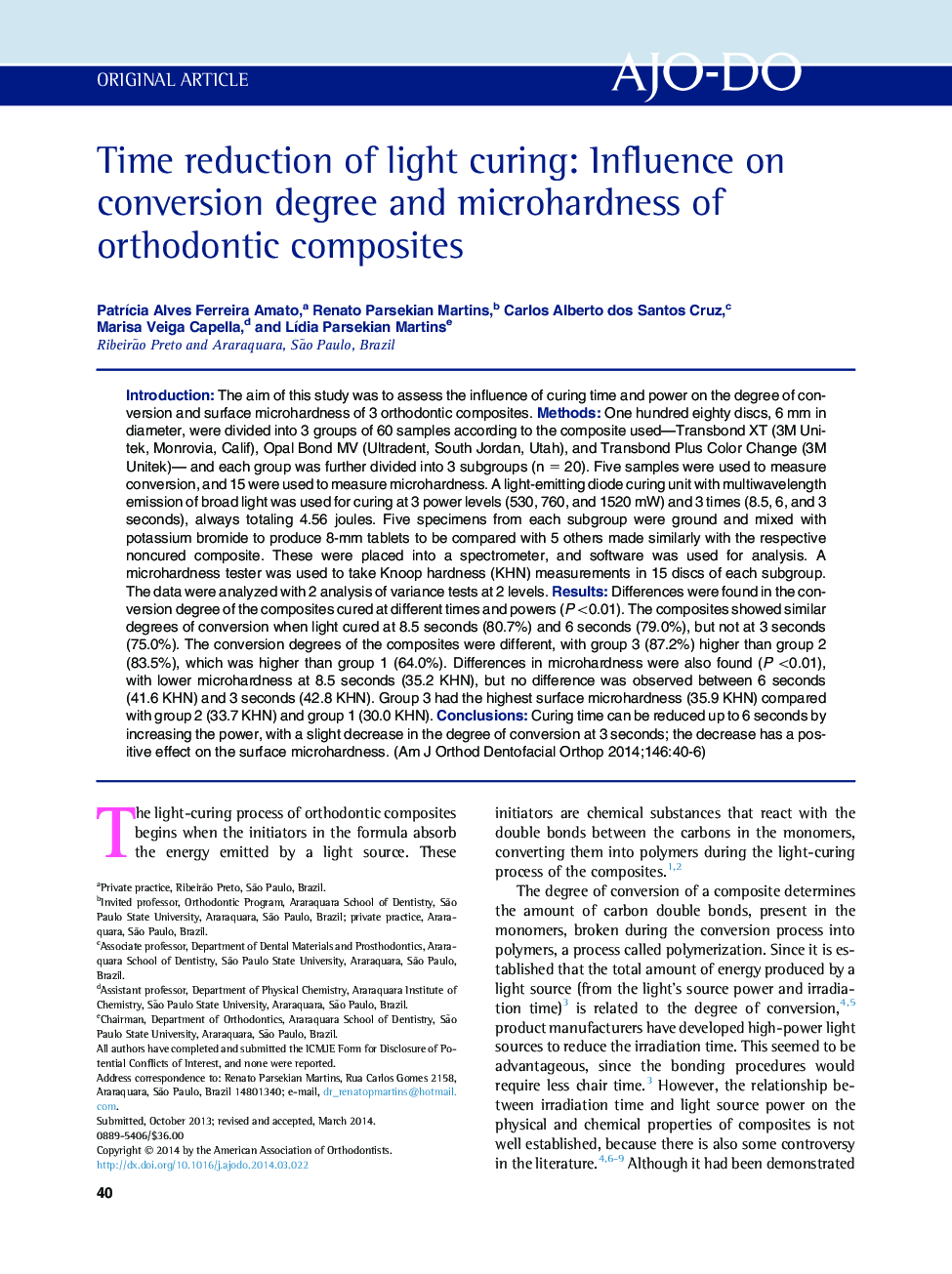| Article ID | Journal | Published Year | Pages | File Type |
|---|---|---|---|---|
| 3115895 | American Journal of Orthodontics and Dentofacial Orthopedics | 2014 | 7 Pages |
IntroductionThe aim of this study was to assess the influence of curing time and power on the degree of conversion and surface microhardness of 3 orthodontic composites.MethodsOne hundred eighty discs, 6 mm in diameter, were divided into 3 groups of 60 samples according to the composite used—Transbond XT (3M Unitek, Monrovia, Calif), Opal Bond MV (Ultradent, South Jordan, Utah), and Transbond Plus Color Change (3M Unitek)— and each group was further divided into 3 subgroups (n = 20). Five samples were used to measure conversion, and 15 were used to measure microhardness. A light-emitting diode curing unit with multiwavelength emission of broad light was used for curing at 3 power levels (530, 760, and 1520 mW) and 3 times (8.5, 6, and 3 seconds), always totaling 4.56 joules. Five specimens from each subgroup were ground and mixed with potassium bromide to produce 8-mm tablets to be compared with 5 others made similarly with the respective noncured composite. These were placed into a spectrometer, and software was used for analysis. A microhardness tester was used to take Knoop hardness (KHN) measurements in 15 discs of each subgroup. The data were analyzed with 2 analysis of variance tests at 2 levels.ResultsDifferences were found in the conversion degree of the composites cured at different times and powers (P <0.01). The composites showed similar degrees of conversion when light cured at 8.5 seconds (80.7%) and 6 seconds (79.0%), but not at 3 seconds (75.0%). The conversion degrees of the composites were different, with group 3 (87.2%) higher than group 2 (83.5%), which was higher than group 1 (64.0%). Differences in microhardness were also found (P <0.01), with lower microhardness at 8.5 seconds (35.2 KHN), but no difference was observed between 6 seconds (41.6 KHN) and 3 seconds (42.8 KHN). Group 3 had the highest surface microhardness (35.9 KHN) compared with group 2 (33.7 KHN) and group 1 (30.0 KHN).ConclusionsCuring time can be reduced up to 6 seconds by increasing the power, with a slight decrease in the degree of conversion at 3 seconds; the decrease has a positive effect on the surface microhardness.
